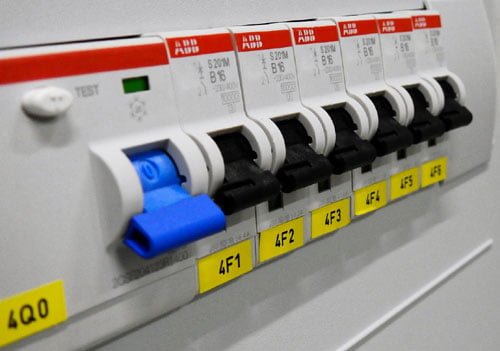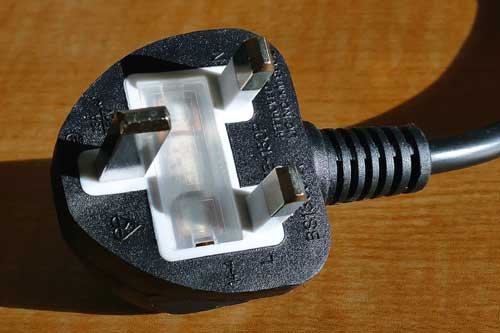A miniature circuit breaker and ground-fault circuit interrupter (GFCI) has been increasingly used for excess current protection in single and three-phase domestic, commercial, and industrial circuits. They are gradually replacing fuses in all modern electrical installations.
What is a miniature circuit breaker?
A miniature circuit breaker is essentially a switch that may be opened and closed manually or automatically when overloaded. As the name implies, miniature circuit breakers are small compared to the regular circuit breakers used in
The tripping action may either be magnetic or thermal. Some circuit breakers make use of both.
Aside from being used for individual protection, they are also used as ground fault circuit interrupters (GFCI). Read more about ground circuit fault interrupter (GFCI) below.

Operation of Circuit Breakers
The first condition of the circuit breaker’s operation is fault detection. The operation of these devices is made possible by the heating or magnetic effects of electric current. Circuit breakers for heavy currents are usually arranged together with protective relay pilot devices. This will help to sense a fault condition and to operate the interrupt mechanism. These normally require a separate power source, such as a battery, current transformers, protective relays, and sometimes an internal control power source.
Once a fault condition (overload or short circuit) is identified, the circuit breaker terminals must open to interrupt the circuit using mechanically stored energy contained within the breaker. This energy is normally stored by a spring or compressed air.
Small circuit breakers normally have a manual control lever to switch off the load or reset itself after interruption. On the other hand, heavy-duty breakers use solenoids to trip the mechanism, and electric motors restore the breaker to normal operation.
The electric contacts used in a circuit breaker must carry the load current without excessive heating, and must also withstand the heat of the arc produced when opening the circuit.
Also, check out this FM transmitter project using only transistors.
These contacts are made of copper or copper alloys, silver alloys,
What is Arcing in Circuit Breaker?
An arc is generated when a high current or voltage is interrupted. The length of the arc depends entirely on the voltage while the heat developed is proportional to the current.
To prevent further damage, this arc must be cooled and extinguished in a controlled way, so that the gap between the contacts can again withstand the voltage in the circuit. Normally, vacuum, air, insulating gas, or oil are used as the medium to contain the arc.
Moreover, the arc is extinguished by :
- Lengthening or deflecting the arc
- Intensive cooling (in jet chambers)
- The division into partial arcs
- Zero-point quenching
- And in DC circuits connecting capacitors in parallel with contacts.
Why Miniature Circuit Breaker?
A circuit breaker has the following advantages over the fuse
- It can be reset quickly.
- All poles are broken in the event of a fault
- Time lag and overload can be adjusted.
- It can be remote-controlled using emergency buttons.
What to look for when selecting a circuit breaker?
Points to take into consideration when selecting a circuit breaker are;
- A
c ircuit breaker must be mechanically strong to operate safely - They should have very low contact resistance and a high capacity to dissipate heat.
- They should have high reliability and be relatively easy to maintain.
Ground-Fault Circuit Interrupter (GFCI)
A ground-fault circuit interrupter (GFCI), is a type of circuit breaker usually designed to operate faster so as to turn off electric power in the event of a fault in the earthing system. This normally happened rapidly in a few milliseconds.
GFCI works by comparing the amount of current flowing to the installation (equipment) and the amount of current returning from the installation (equipment). In most cases, a GFCI is synonymized with a residual-current device, sometimes too, a residual-current circuit breaker.
Applications of GFCI
- GFCI is used to protect people who use long extension leads especially those that are used outdoors such as garden equipment and public address systems from electric shock due to earth faults.
- Moreover, GFCI is used as alternate protection against shock for building with old wirings or installations that have no provision for grounding at all.






